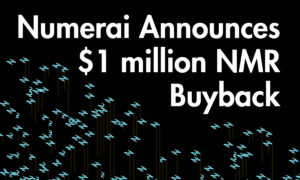Since the inception of technical analysis in the 18th century, it has continued to evolve and adapt. Nowadays, traders have access to hundreds of diverse technical indicators that they can use to better anticipate market behavior, all of which can be found in the top stock charting applications.
Trading indicators are typically classified based on their function to make it easier to understand. These categories include oscillators, volatility, volume, support/resistance, trend-following, leading indicators, and more.
Many investors regard these indicators as the key to success in day trading. But is this the case, and which indicators are the best if so?
In this guide, we’ll explore the best indicators for day trading so that you can incorporate them into your strategy, helping you elevate your technical analysis skills and achieve better results.
Recommended Indicators for Day Trading
1. Simple Moving Average (SMA)
The Simple Moving Average (SMA) is a popular technical analysis tool that helps traders identify and analyze price trends by smoothing out price fluctuations over a specified period. The SMA is calculated by taking the arithmetic mean of the closing prices of an instrument for a set number of periods, such as days, weeks, or months.
For example, if you want to calculate a 5-day SMA for a stock, you would add up the stock’s closing prices for the last five days and then divide the sum by five.
When new trading days are included, the oldest closing price is dropped from the calculation, keeping the time frame constant.
By plotting the SMA line on a price chart, traders can observe the overall direction of an instrument’s price movement. If the SMA line is trending upward, the instrument’s price generally increases, suggesting a bullish market.
Conversely, if the SMA line trends downward, the price generally decreases, indicating a bearish market.
This helps to identify potential support and resistance levels. When the price approaches the SMA line, it can act as a support level in an uptrend or perhaps has a resistance level in a downtrend.
2. On Balance Volume (OBV) indicator
The On Balance Volume (OBV) indicator is a technical analysis tool that focuses on measuring the cumulative flow of volume with the price movement of a financial instrument.
The basic premise of OBV is that changes in volume often precede price changes. In essence, OBV is designed to help traders detect early signs of market reversals or confirm the strength of a prevailing trend.
To calculate the OBV, you need to compare the closing price of the instrument with the previous day’s closing price.
The OBV indicator is cumulative, meaning it continuously adds or subtracts volume based on the price movement direction. By observing the OBV line on a chart, you can gain valuable insights into the buying and selling pressure in the market.
When the OBV line is rising, it indicates that there’s more buying pressure than selling pressure. It suggests that the instrument’s price is more likely to increase, especially if the OBV line reaches a new high.
Conversely, when the OBV line declines, it implies more selling pressure than buying pressure, which could signal a potential price drop. It’s a great tool for day trading for beginners.
3. Volume Weighted Average Price (VWAP)
So, let’s talk about the VWAP indicator. It considers volume and price data to calculate an average trading price during a session. This way, you better understand an instrument’s price based on actual transaction volumes, not just the closing price.
Picture the VWAP as a moving average on a chart. If the price is above this, the market has bullish sentiment and vice versa.
It’s helpful because it gives you a sense of an instrument’s health, like if a stock reaches a new high with high or minimal trading volume. This info helps you understand the price’s stability and short-term changes.
By the way, we’ve written a post on scalping vs day trading. You should look at it if you’d like to learn more about buying and holding trades.
4. Relative Strength Index (RSI)
The RSI is super popular and helps you spot overbought and oversold markets. It’s an oscillator that measures price fluctuations and tells you whether the current trends are fair. The RSI appears as a line on a graph, ranging from 0 to 100.
Keep an eye on convergences and divergences when using the RSI. If the indicator’s highs and lows align with the price trend, you’ve got a convergence, meaning the trend is strong and likely to continue, and vice versa.
5. Candlestick Pattern Recognition Indicators
When analyzing price movements, classical technical indicators play a crucial role. They assist you in determining price trends, spotting overbought and oversold market situations, and pinpointing support and resistance areas.
However, when you combine these technical indicators with candlestick patterns, their effectiveness increases significantly.
Take the hammer, for instance, which signifies a bullish reversal pattern. The likelihood of a reversal is greater when the hammer appears in a support zone, such as at the VWAP or within an oversold market.
Candlestick pattern recognition software can make your life easier by automatically identifying your preferred candlestick patterns and emphasizing them on price charts. It allows you to focus on strategic decision-making based on these visual cues.
Are These Indicators The Best For You?
So, you might be wondering which indicators are best for your day trading needs. Well, the answer depends on your trading style, experience, and objectives.
The good news is that some trading indicators are easy to understand, and you can apply them to analyze any financial instrument.
It’s crucial to remember that successful day traders rarely rely on just one or two indicators.
They have various tools using these indicators to compare and corroborate bearish or bullish signals.



































